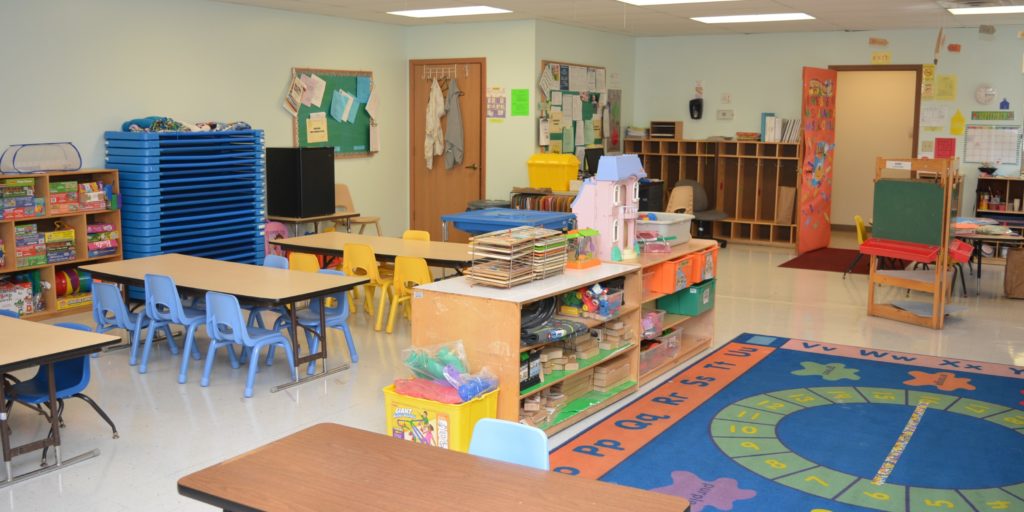Asking the Important Questions
Observations
Observing in a classroom allows future teachers to gain hands-on experience on how to implement particular practices in a real life setting. I am observing in a urban Pre-K Counts classroom with all three year old’s and a year two co-op teacher. After two observation days (a total of eight hours so far), I have seen so much from the teacher and students that caused me to “think” and ask questions to myself.
Let me set up the scene so you can have a better understanding of the environment I am observing in:

This is what a typical Headstart classroom looks like!
(or click here to see a video of a classroom!)
So I walk in, and am greeted simultaneously by at least two children that reach my knees, and are ecstatic to show the new person (me) the shirt they are wearing. I proceed to rotate around centers, which are play-focused STEM , music, art, kitchen and other learning centers. I rotate around the centers while sitting in a chair that is not meant for a grown human begin, and play with the children while observing their behavior.
_______________________________________________________________
Schedule
8:30 arrival time – Choice centers/write name/snack
9:05 Morning Circle/Read Aloud
9:30 Choice Centers/Small Groups
10:30 Gross Motor Time
11:40 Movement Activities
12:10 Lunch
——————————————————————————————————–
As you can imagine, observations allow for plenty of time to come up with a plethora of questions.
After exploring and thinking through the many I had, I came up with one big question that I am interested in learning about the most: “Why does allowing students to choose a center themselves work so well compared to having “rotations” or teacher-choice centers?”
Remember:
Student- Choice Centers

Upon talking with my co-op, she informed us that a new policy Pre-K Counts and Headstart is following through with this year (new to her location, not all) is allowing the children to choose the center they want to be at during free time instead of incorporating a rotation system.
My co-op informed me this to insure that the children are learning as much as possible during free play by inquiry based learning through having the choice to make their own decisions. She mentioned that it helps with classroom management and behavior problems if the children are choosing to be where they want to be.
Research
So what does all of this mean? Lets get fact-checked by the experts. I’m going to focus on the question of choice making in the classroom. Remember talking about that? Well hopefully along with me, you found it interesting and look forward to hearing about what the big guns have to say about it.
SO
Let’s dive in.
In a journal article I found called “Naturally Occurring Opportunities for Preschool Children With or Without Disabilities to Make Choices” all of the collaborators in this article have put their heads together and answered my
question! They start off by letting us know just how important choice making is in life. Not just for preschoolers, but for adults and those in between. Imagine if the freedom of choice was taken from you.

When a child has a choice in the location which they want to work or play in, they tend to focus well on their work and in turn increases appropriate forms of behavior, thus decreasing inappropriate forms.
Keeping this in mind, although this may seem trivial to us, the more choice that students have in their day, the more learning, higher order thinking, and enjoyment is had.
We can attribute and compare this to inquiry based learning. In another article titled “Preschool: A Hearts-on, Hands-on, Minds-on Model for Preschool Science Learning” Trundle and Smith introduce us to the preschool learning cycle:

From this image, notice the exploration phase. This phase fosters explicit and intentional learning. After students choose their center of choice and explore and play in that center, teachers are able to ask questions that expand the students knowledge and understanding by asking those questions that produce divergent answers.
“Build on their incidental learning with intentional instruction to foster explicit learning”
Reflection
So what does this all mean? I observed that the classroom is focused on student choice centers. From there, and after talking with my co-op, I learned
 how choice has positive affects on the students behavior and learning.
how choice has positive affects on the students behavior and learning.
I asked the question “why does allowing students to choose a center themselves work so well compared to having “rotations” or teacher-choice centers?” This was answered through research.
Through the research, we were introduced to the exploration phase of learning. This phase fosters explicit and intentional learning that expands the students knowledge and understanding.
-BUT-
What do we do with this information? How do we incorporate choices in the classroom?
We create a culture of inquiry by encouraging students to express their thoughts in a safe environment. We (the teacher) seeks support from external resources. Gain an understanding of the students. Lastly, keep an open-mindedness and spontaneous approach to learning.
to learn more, here the first video from a four part series on how to incorporate inquiry based learning into the classroom:
How To Get Into Inquiry-Based Learning: Part 1 – First Steps to Inquiry
Incorporate Inquiry-Based Learning into your Classroom. Start with this short four part video series. (Version française: https://goo.gl/fkRRea) PART 1 – First Steps to Inquiry (https://youtu.be/N9cK_eto3HE) Prepare yourself to create an Inquiry – Based activity for your classroom.
Resources
Jolivette, K., Stichter, J., Sibilsky, S., Scott, T., & Ridgley, R. (2002). Naturally Occurring Opportunities for Preschool Children With or Without Disabilities to Make Choices. Education and Treatment of Children, 25(4), 396-414. Retrieved from http://www.jstor.org/stable/42899719

Comments are closed.